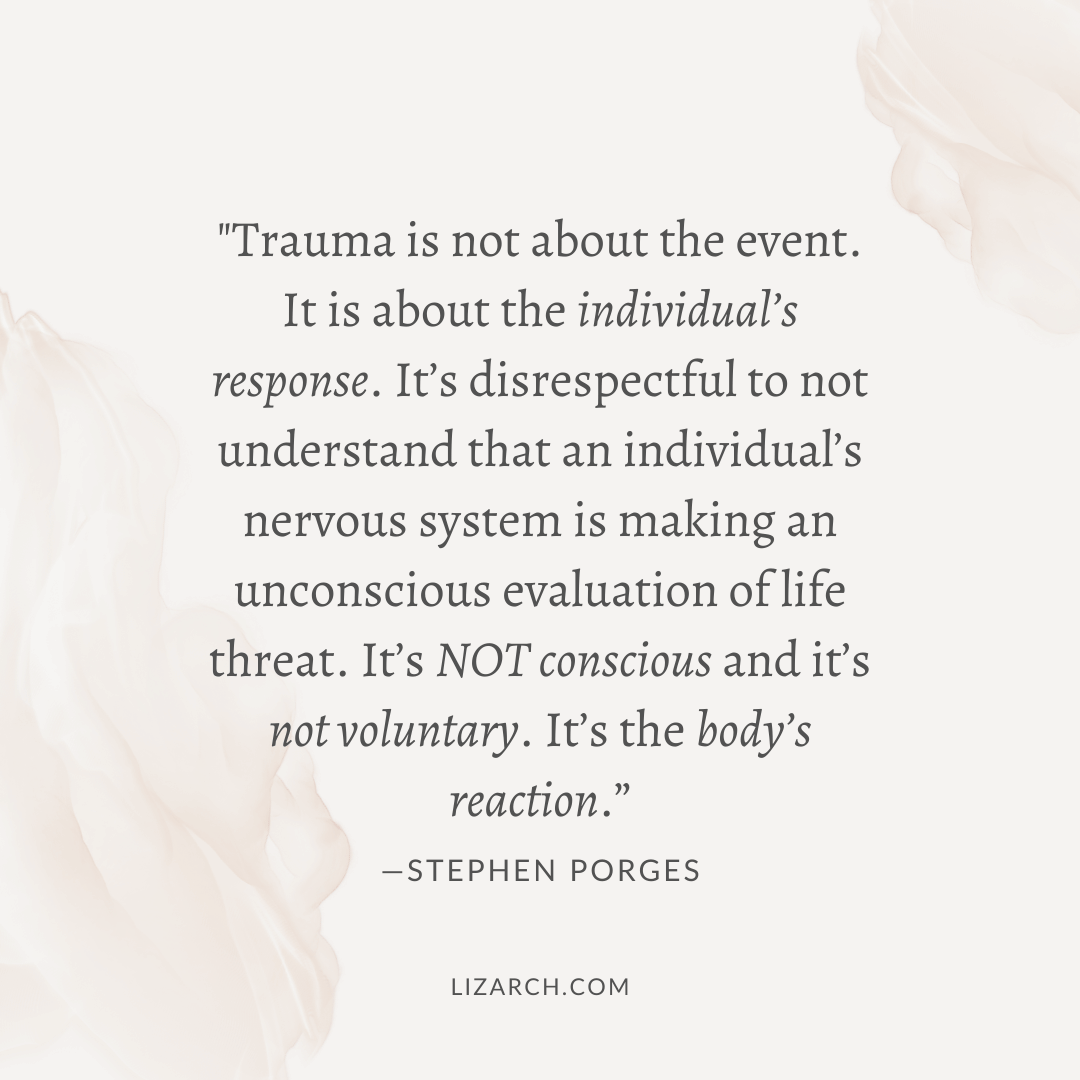Why Relaxation Techniques Don't Always Work

Years ago when I was at the height of my panic disorder diagnosis, things that once brought me relief like yoga or deep breathing exercises, suddenly seemed to no longer work.
When I felt a panic attack coming on, I would reach for my trusted calming tools, only to find that they exacerbated my physical feelings of fear and overwhelm. My physical sensations and body became the enemy and I had a visceral feeling of wanting to jump out of my skin.
In the wellness world, moving into a “parasympathetic state” (also known as rest/digest) is often glorified and calming techniques are touted as the end all be all. And hey, I totally get the hype! I have enormously benefitted from my toolbox of calming techniques and share these tools to great success.
But what happens when techniques that are meant to calm us, collapse us instead?
I began noticing this phenomenon when I first started working with people who had experienced significant trauma years ago. Fresh out of my first trauma-informed yoga teacher training and eager to help others, all the tools in my toolbox at the time were focused on down-regulating the nervous system and moving people into a parasympathetic state of deep relaxation.
But curiously when some clients would get too calm, they would drop into a state of freeze or shut down. I could see their physiology shift instantly like a hard slam on the brakes.
They would stop breathing, their bodies would either go rigid or completely limp and there was a vacancy in their eyes – like the lights were on but no one was home. Fortunately, I was able to bring them back into the present moment fairly swiftly using gentle grounding techniques and compassionate co-regulated support.
But it still shook me. And I was curious to know why this happened and how I could better support my clients (and myself) when relaxation techniques seemed to trigger fear instead of calm.
My research led me to Dr. Stephen Porges and his groundbreaking work with the autonomic nervous system centered around the vagus nerve, known as the Polyvagal Theory.

According to the Polyvagal Theory, the vagus nerve (arguably one of the most important nerves in the body) has two distinct pathways – Ventral Vagal and Dorsal Vagal and both pathways are part of the parasympathetic nervous system.
The Ventral Vagal pathway helps to regulate our heartbeat as well as oversees the overall regulation of our nervous system. When the ventral vagal pathway is engaged, it leads to physiological feelings of safety, connection and social engagement.
The dorsal vagal pathway, on the other hand, has the very important function of regulating digestion as well as supporting deep rest and sleep, but when it’s recruited as a defense system, it immobilizes the body into collapse or shut down.
The shut-down response of the dorsal vagus is our last line of defense when the nervous system perceives life threat. If fight or flight is not possible or unsuccessful, the dorsal vagal system provides an incredibly powerful survival strategy of immobilization. Predators don’t typically like dead prey, so by completely immobilizing the body there is a chance that the predator will lose interest (this looks like death feigning in animals). If the predator is still on the hunt and death is imminent, the dorsal vagal pathway releases powerful neurochemicals that helps numb the body to pain. It’s a merciful and quite brilliant defense in the face of life threat.
But here’s the thing, we don’t get to consciously decide what is life-threatening. Your nervous system decides for you. Hearing the sound of a fireworks on New Year’s Eve might trigger a dorsal vagal response and shift your physiology into collapse, even if you’re physically safe.
The immobilization response can also present itself in many ways – in some nervous systems it may look like a freeze response (like a deer in headlights), in others it may look like fainting or passing out, going weak in the legs, letting go of our bowels, dissociation (disconnecting from our body), or “zoning out.”
Immobilization can be a terrifying experience and once the body goes there, it can begin to perceive any activity that slows the heart and relaxes the muscles as no longer safe, but life-threatening.
Hence why deep relaxation techniques can fail. The body does not perceive relaxation as safe. Relaxation begins to register as immobilization (or shut down). And certain nervous systems will do anything possible to avoid the terror of shutting down. This is often why so many trauma survivors feel “wired and tired” – they desperately want to rest, but their nervous systems simply don’t feel safe enough to relax. Relaxation itself becomes a trigger.
While I can’t offer a solution to a very individual and complex issue in a single blog post, what I do know is that we have the capacity to re-tune our nervous system toward safety and calm using the Polyvagal Theory as our guide. It requires an understanding and honoring of your individual nervous system and the right somatic tools to support a positive shift in your unique physiology.
Titration is also key – taking a slow and measured approach so as not to overwhelm your nervous system. The goal is to safely stretch your nervous system so you can build capacity and resilience without pushing it overboard into stress and collapse.
As Dr. Stephen Porges says, “Trauma is not about the event. It is about the individual’s response. It’s disrespectful to not understand that an individual’s nervous system is making an unconscious evaluation of life threat. It’s not conscious and it’s not voluntary. It’s the body’s reaction.”
If you’re interested in learning more about the neurobiology of trauma and gaining tangible tools to support your nervous system, join the waitlist for my upcoming Trauma Alchemy 8-week live group coaching program.
Our next cohort starts this fall. The course only opens a few times a year and spaces are limited. You can learn more here.


